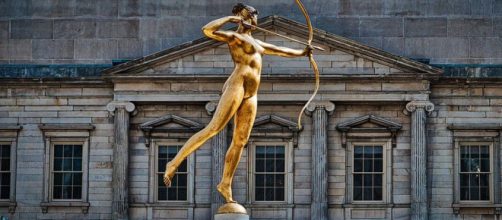Change is in the air – rising seas, decreasing shorelines, severe weather systems. But while impermanence is inevitable, you don’t expect to see it in an art museum where its holdings are up for sale. Called deaccessioning, the procedure is a complete reversal of the museum idea.
What is an art museum?
Consider that the word “museum” comes from the Greek “mouse,” meaning home of the Muses; and consider that while none of the muses had anything to do with visual art, their mother Mnemosyne was the goddess of memory. All of which makes the museum a kind of monument to memory.
Turning it into a supermarket of objet d’art on special violates history.
Paying the bills
The latest example of deaccessioning is occurring at the Metropolitan Museum of Art. It’s also the most shocking. Pruning even a little of the 5,000 years of human creativity that the Met owns devalues it. Why does it? To pay bills.
I rush to say that sales of duplicates or substandard works are a long-accepted practice at the Met, but only if the money is used to buy more art. This is not the case with the current sales. Met director Max Hollein states on the museum website that because of the pandemic and diminished visitor attendance, he needs to “temporarily direct sales to salaries this year and next…in light of the historic crisis we face.”
Picking and choosing
Hollein has also dismissed employees to make up for the shortfall, as many as 400 of the 1600-member staff.
You need a killer instinct, as well, to choose what art should be dismissed. He points to storage space overcrowded with 1.5 million works. So there’s that. In his own defense, he told Artnet, “We are actually taking our time to do what we consider is right.” The question pressing for an answer: is he right?
It’s not right.
Christopher Knight, L. A Times art critic doesn’t think the Met director is right, writing that selling art to pay bills “is a stark admission of administrative failure.” He cites the Met’s whopping income of $3.6 billion in endowments, admissions, exhibit rentals, shop sales, grants, and gifts. He also pointed out the loathsome fact that during the pandemic, America’s billionaire enjoyed a near 40% swelling of their coffers.
Clearly, he doubts the Met’s need to sell art to pay bills.
I’m with Knight. The Met asking for more money is like watching billionaire Michael Bloomberg with his hand out on street corners, offering to clean windshields at traffic stops.
In a nutshell
The thing that bothers me the most about deaccessioning is that with the anticipated success of the Met’s sales, there won’t be any such thing as a permanent collection anymore. The museum website states “the permanent collection contains over 2 million works, divided among 17 curatorial departments.” With deaccessioning, that bragging right will need to be taken down.
Temple to times past
Deaccessioning is sure to impact donated art. Who would want to bequeath a treasure if the treasure house can sell it at will?
Einstein once said that the ability to change is a measure of intelligence. If that’s true, the Met has gotten too smart for its own good with this willingness to sell off even a small part of the collection. That shouldn’t happen to a monument to memory.


